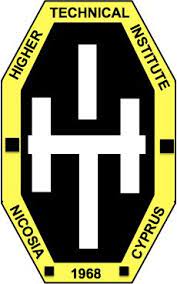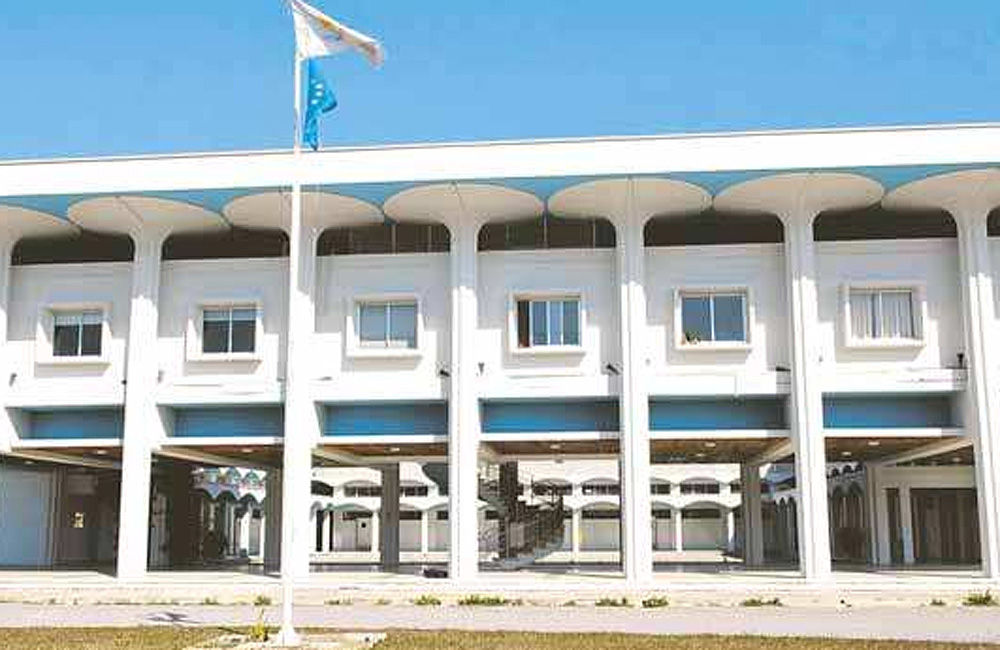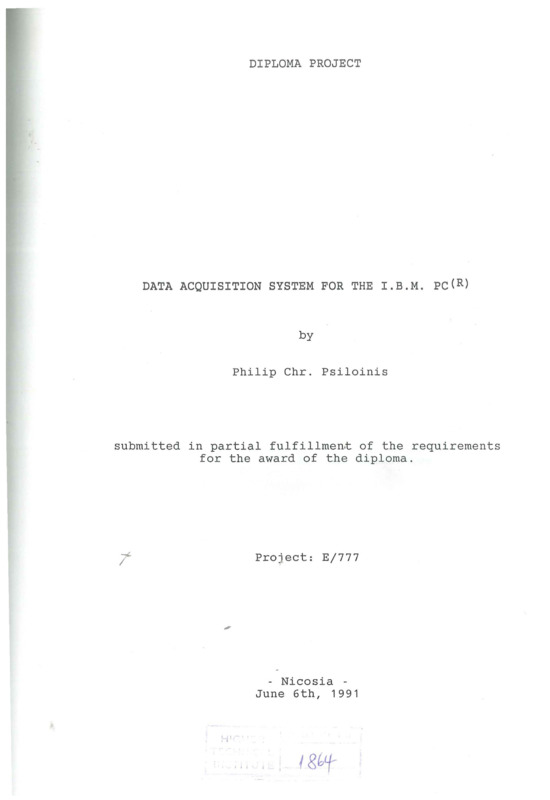-
Τίτλος
-
Data acquisition system for the I.B.M. PC(R)
-
Θέμα
-
Automatic data collection systems
-
IBM Personal Computer
-
Δημιουργός
-
Psiloinis, Philip Chr.
-
Πηγή
-
Higher Technical Institute
-
Το πλήρες κείμενο είναι διαθέσιμο από το Υπουργείο Ενέργειας, Εμπορίου Βιομηχανίας και Τουρισμού
-
Εκδότης
-
Library of Cyprus University of Technology
-
Ημερομηνία
-
1991
-
Συνεισφέρων
-
Theopemptou, CharaIambos
-
Kyrmitsis, Chr.
-
AIexandrou, ΑΙ.
-
Δικαιώματα
-
Απαγορεύεται η δημοσίευση ή αναπαραγωγή, ηλεκτρονική ή άλλη χωρίς τη γραπτή συγκατάθεση του δημιουργού και κάτοχου των πνευματικών δικαιωμάτων.
-
Μορφή
-
pdf
-
Γλώσσα
-
eng
-
Τύπος
-
text
-
Αναγνωριστικό
-
EED 0150
-
Σύνοψη
-
This project is intended to lay the foundations for the development of a data acquisition system on the IBM PC. The user of this program, is to be able to utilise the analog-to-digital converter of a commercially available multifunction card. This is the PCL711 from Advantech company ltd.
The basic thing this project is supposed to do, is to demonstrate how the computer can process analog data, that is sampled and converted into digital format. The whole concept is to demonstrate how computers can help bring out analog data which the user cannot visualise, out into a medium which the user can see.
Taking an industry standard Pascal compiler, Turbo Pascal, it was made possible to write the engine driving the card. Then by building around this engine, it was made possible to write a small routine to get up to 1024 samples and save them into a file.
Taking advantage of the compilers powerful interrupt handling routines, it was procedures and functions were added that allowed the computer process data while in the background a timered mode allowed the computer to sample and store from the card at user defined intervals.
Then, routines for plotting the data on the screen and printer were added. These routines featured screen grab facilities that allowed the saving of the screen into a file and possibility of restoring it back on the screen.
Fourier transforms are powerful tools for processing waveforms, so fourier analysis routines were added to enable the user to analyse the sampled data. The analysis includes real and complex analysis which can be viewed together with the plot of the sampled data.
Finally, a data conversion routine which allows the user to enter raw data in a file and process them as if they were normally sampled.
This project provides the basic software, the building block on which a powerful data acquisition system can be built. It achieves this much and is user friendly thanks to the Turbo Vision environment of the Compiler.
What is more important though is that the programming experience it provided me, made me more confident in writing software to drive experimental hardware that is interfaced on the IBM PC. It gave me a thourough understanding on how to manipulate experimental data, an understanding of the problems that may arise in similar environments and made me able to understand better the acquisition systems that arer used even in everyday household machinery such as compact disks and similar digital systems that come out each day.
 EED 0150.pdf
EED 0150.pdf 

